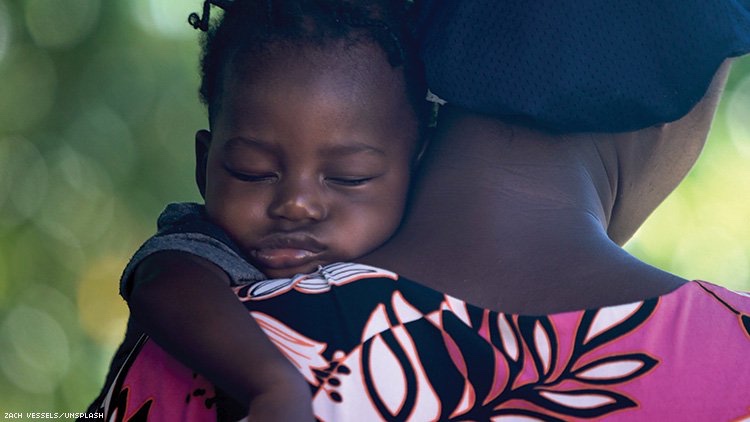More than 50 percent of people living with HIV in the world are women. We cannot find a cure without them.
By Desirée Guerrero SEPTEMBER 10, 2019 5:05 AM EST
With reports earlier this year that a second person has achieved complete eradication of HIV (though experts cautioned that it is too early to declare the subject “cured”), the global scientific community is working harder than ever to find a functional cure for the virus. To do so, researchers are beginning to realize that they have to contend with a long-ignored demographic: women.
Although women make up just over half of the nearly 37 million people living with HIV worldwide, there is a notable lack of women involved in research into potential treatments, cures and vaccines, according to a recent in-depth report by The New York Times.
Globally, HIV is the leading cause of death among women of reproductive age. The epidemic continues in part due to new diagnoses among young women in Africa, parts of South America and even the southern United States.
However, a 2016 analysis by amfAR found that in HIV cure trials, women made up only a median of 11 percent of participants. In antiretroviral drug trials, 19 percent of participants were women. Vaccine studies came closest to having equal gender representation, with 38 percent female participation.
"If we're going to find a cure, it's important that we find a cure that actually works for everyone," Rowena Johnston, amfAR's director of research, told the Times.
There are differences in the immune systems of men and women, including how they respond to HIV. Women's immune systems often respond strongly to HIV early on, with tight control over the virus for five to seven years. But after that, women seem to progress more quickly to late-stage HIV (or AIDS) than men and have a higher risk of heart attacks and strokes.
“There are all kinds of differences between men and women, probably mediated in part by hormonal effects,” Dr. Monica Gandhi, a professor of medicine at the University of California, San Francisco, told the paper. For example, estrogen, a hormone that women have higher levels of, appears to contribute to HIV latency, allowing the virus to hide from drugs and the immune system.
Gender differences have been observed even among prepubescent children. One study found that among 11 children who were “elite controllers” – those able to suppress HIV to undetectable levels without drugs – 10 of them were girls.
Some drugs affect women and men differently. Children born to women taking dolutegravir, for example, may have a higher risk of neural tube defects, while women taking nevirapine were much more likely to have a severe rash than men using the drug. However, the Times report notes, “Men accounted for 85 percent of the test subjects on whom these drugs were tested.”
This may seem related to the apparent concentration of HIV among gay men (at least in the US), but the truth is that these numbers reflect a widespread bias in medical research to accept the male body as the standard for testing and dosing recommendations.
Still, it’s true that gay men in the U.S. have organized and fought to participate in drug trials since the early 1980s, and they are connected to support networks that share news of clinical trials. And they often live in the urban settings where most research happens. Women with HIV generally have fewer connections and are less likely to make demands on the health care system. Lack of child care or transportation or discomfort with male doctors can keep some from clinical trials, and trial sponsors often fail to take steps to help more women participate.
For women of color, there are even more hurdles when navigating a health care system that has ignored and exploited them for decades. “[There’s] so much stigma still in our community around research,” Ublanca Adams, 60, a California woman living with HIV, told the Times. “The way information is provided to our community and our people is not a way to be inclusive or welcoming.”
Additionally, Food and Drug Administration rules limit drug testing on cisgender women of childbearing age because of the possibility of unplanned pregnancies. No one wants to deal with how an investigational drug might affect a developing fetus.
The restrictions have led some researchers, including Dr. Eileen Scully, an assistant professor of medicine at Johns Hopkins University, to recruit menopausal women. But because these participants have lower levels of circulating estrogen, the results may not be applicable to younger women.
Ultimately, most researchers take the easy way out and do drug trials on men. Information about how a drug affects women comes only after the drug is on the market. A growing number of studies include trans women, but they remain relatively rare. In the past, trans women were often grouped with gay men, even though their response to drugs can also differ widely from that of cisgender men.
Two recent trials of long-acting injectable HIV drugs managed to recruit significant numbers of women (33 percent were women in one study, 23 percent in the other), probably because of the promise of less frequent treatment — a great convenience for, say, an overwhelmed mother.
“Patients were lining up outside the clinic,” said Dr. Kimberly Smith, head of research and development at ViiV Healthcare, which led the research. But trials in the United States typically have few women enrolled, Smith said, because about 75 percent of people living with the virus in this country are men.
There are efforts to address the disparity between men and women abroad. Dr. Bruce Walker and his colleagues at the Massachusetts-based Ragon Institute have set up a group in South Africa called Fresh, which brings nearly 2,000 young women in for HIV testing twice a week. Researchers provide preventive therapy and track diagnoses, and plan to test potential cures in the group.
At: https://www.hivplusmag.com/print-issue/2019/9/10/if-we-want-eliminate-hiv-we-cant-ignore-women

